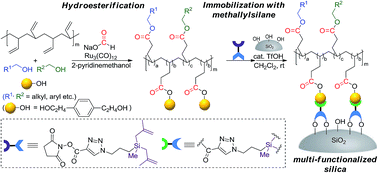Surface functionalization of silica using catalytic hydroesterification modified polybutadienes†
Abstract
A new method for covalent immobilization of catalytic hydroesterification modified polybutadiene on a silica surface is described. Compared to conventional immobilization procedures, the new protocol enables control of the functional group composition on the modified silica surface.



 Please wait while we load your content...
Please wait while we load your content...